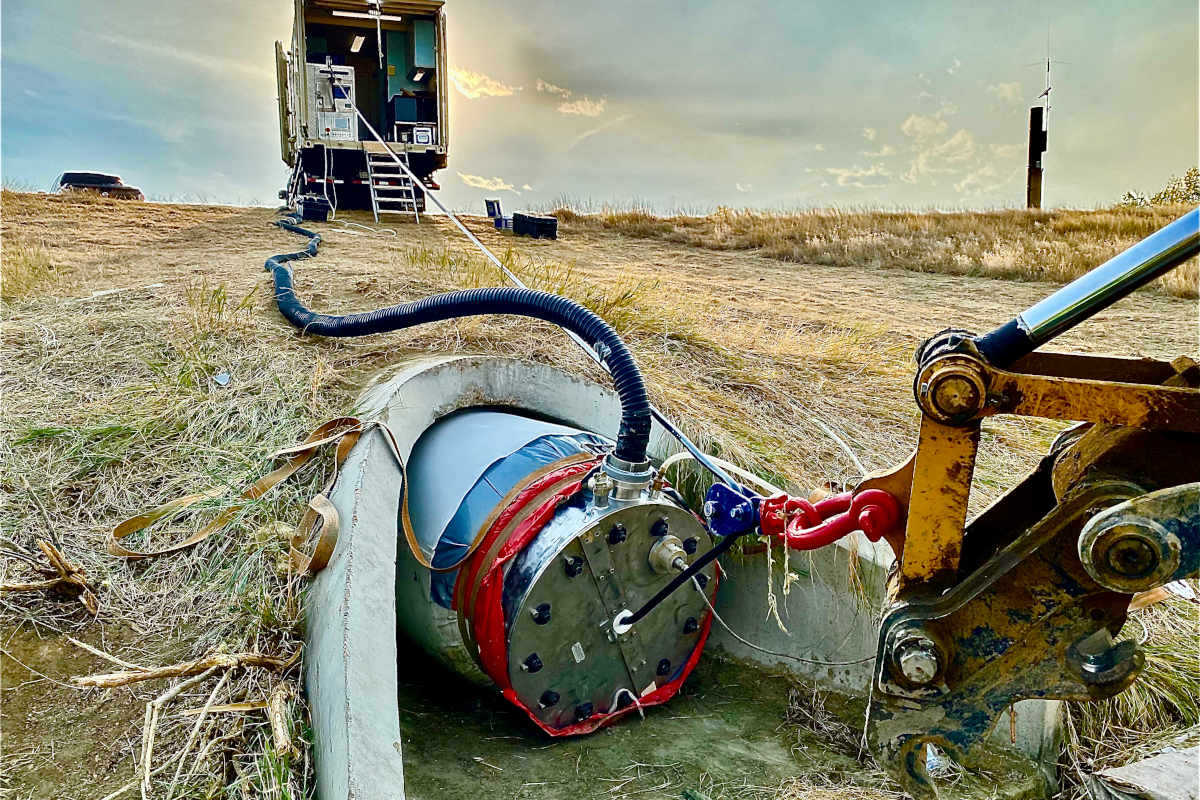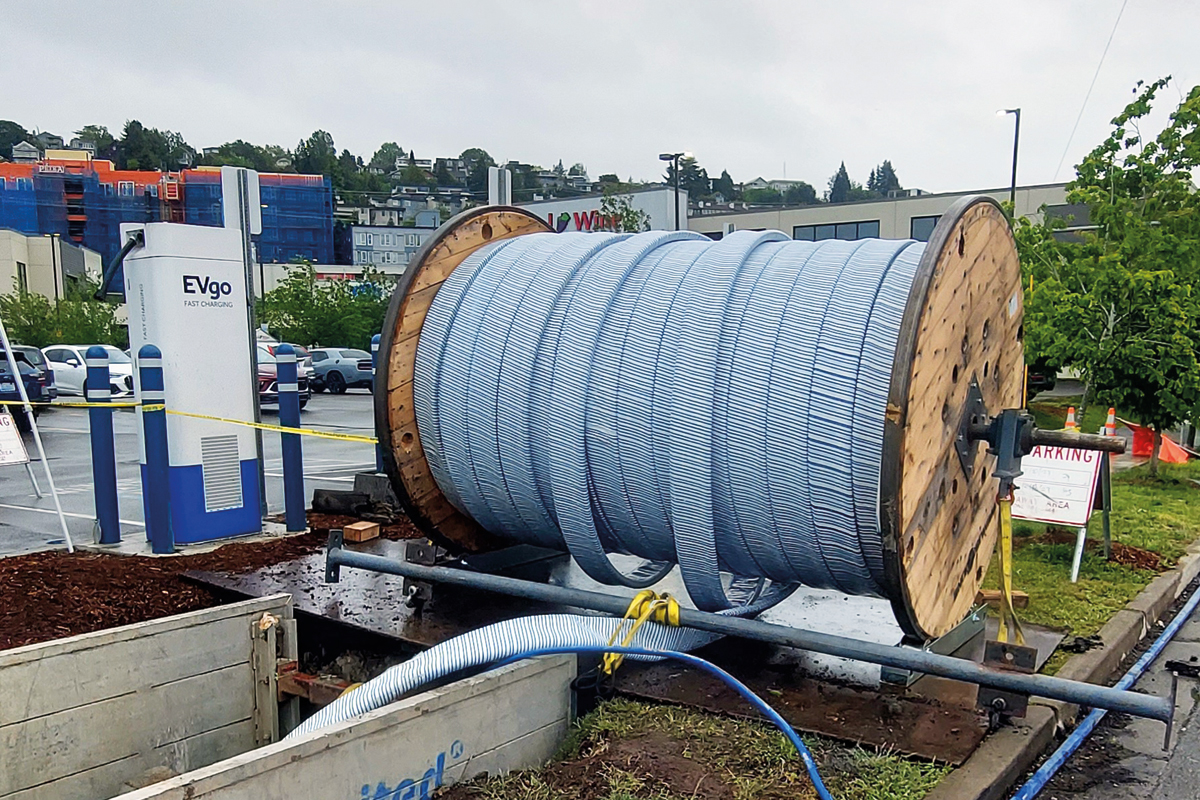
Culvert Lining Under a Busy Interstate in Utah
February 2, 2017
In August 2015, the Utah Department of Transportation (UDOT) released its long-range plan to address transportation needs in rural Utah over the next 25 years.The plan focused primarily on rural areas of the state and identified projects presumed to strengthen the state’s economy and enhance the quality of life for residents.
The plan sites a report from the Governor’s Office of Management and Budget (GOMB) that states Utah’s population is expected to reach 4.5 million people by 2040. That’s a significant increase from the current population of fewer than 3 million. In addition to population growth, the plan takes into account air quality concerns, freight movement across the state, recreation and tourism, energy development and economic development.
RELATED: Winning in the Wasatch: Small Trenchless Rehabilitation Project in Utah Yields BIG Results
Utah works within the Interstate-15 (I-15) Mobility Alliance. It’s an alliance of transportation authorities from Utah, Arizona, California and Nevada. According to the long-range plan, the alliance was selected as one of six corridor coalitions nationwide to receive $1.250 million in funding under the Multistate Corridor Operations and Management Program to execute the delivery of the I-15 Dynamic Mobility Project. In the plan, the project seeks to obtain, exchange and disseminate real-time data on all segments of I-15 to create a seamless backbone from San Diego to the northern border of Utah. Several years ago, UDOT determined that I-15 was in need of improvement including widening, resurfacing, and several drainage improvements.

At some points, the crew was installing up to 300 ft per hour. Snap-Tite provided more than 12,000 ft of 20-in. Snap-Tite pipe, more than 1,000 ft of 30-in. Snap-Tite and more than 800 ft other miscellaneous sizes, as needed.
Breaking It Down
The scope of the plan is massive and divided into prioritized sections. In 2016, near the top of that list was a section of I-15 between Farr West and Brigham City. Along the 12-mile stretch of interstate, more than 200 concrete metal pipe culverts were in poor condition. There were two options: dig each one up and replace the culvert or find a way to rehabilitate the existing culvert. Most of the culverts were constructed under very deep fill and lined under a busy highway. Digging up and replacing those culverts would have been a massive inconvenience to the motoring public, not to mention extremely costly in both time and money.
UDOT needed a solution that kept traffic moving and a method that could be completed concurrent with other aspects of the overall project. Whitaker Construction handled the job and decided on using the Snap-Tite system for the repairs.
RELATED: Sliplining Used to Rehab Collapsed Pair of CMP Pipes
With the system, high-density polyethylene (HDPE) pipe is pulled through the existing culvert. The first piece of Snap-Tite HDPE is lowered into position and inserted into the host pipe. A gasket is installed on the next piece of pipe, assuring a watertight seal when connected, meeting ASTM D3212 requirements. The second piece of pipe is lowered into position and lined up with the first piece. Using chains and pressure from the excavator, the two pieces of pipe are ‘snapped’ together.
The process is repeated until connected sections of pipe are pushed through the entire length of the culvert. Different length PVC pipes that will deliver the grout flow are installed and both ends of the pipe are sealed. Workers prepare the low-density cellular grout that will be pumped into the pipe. The grout is pumped into the entire length of the pipe, filling in all voids between the new and host pipe, and the areas between the pipe and roadway. Nearly all the work was completed off-road in the culvert itself. No road closure or traffic interruption occurred.
Using Snap-Tite allowed the contractor to quickly repair the culverts without impeding traffic or the other construction work on the roadway. “Utah has been on the leading edge of culvert rehabilitation over the past several years. They have been proactive in identifying problem culvert structures and establishing either methods of repair or replacement,” said Snap-Tite sales representative Russ Wosk.
Project Challenges
A large majority of the culverts had drainage boxes located in the median between the north and south lanes of the highway. The crew pushed the Snap-Tite pipe all the way through to the other side and then came back through and cut pieces out in order to make room for the boxes to work.
“In some cases, the boxes were off-center,” Wosk explained. “The contractor had to push the pipe from both sides.”
Another issue was that the culverts were part of an irrigations system used by local farmers to water their properties. In many cases, the water could not be shut off. That alone limited the type of liners that could be used to rehabilitate the culverts.
Unlike other commonly used piping materials, HDPE won’t corrode or leak, creating a culvert that will last for decades upon decades. A unique feature of Snap-Tite is that it does not require fusion to join the HDPE pipe together. The patented male/female machining at each end of the HDPE allows the pipe ends to be ‘snapped’ together piece-by-piece and pushed into the full length of the existing pipe. Because of the mechanical joint, the water continuing to flow through the pipe was not an issue.
RELATED: Whitaker Construction Becomes Authorized Reline America Installer
The ease of installation allowed the contractor to install Snap-Tite pipe quickly. At some points, the crew was installing up to 300 ft per hour. Snap-Tite provided more than 12,000 ft of 20-in. Snap-Tite pipe, more than 1,000 ft of 30-in. Snap-Tite and more than 800 ft other miscellaneous sizes, as needed. In total, Snap-Tite provided more than 16,000 ft of 12- to 48-in. storm drain culverts under I-15 in Box Elder County.
Prior to this project, Whitaker Construction had never used the Snap-Tite product. Typically, the contractor would choose a cured-in-place pipe (CIPP). “We are now true believers in Snap-Tite,” said Ken Hamson, the project manager. “Snap-Tite saved us time and money over CIPP and that was invaluable.”
Chelsea Rapideau is public relations coordinator at ISCO Industries.




